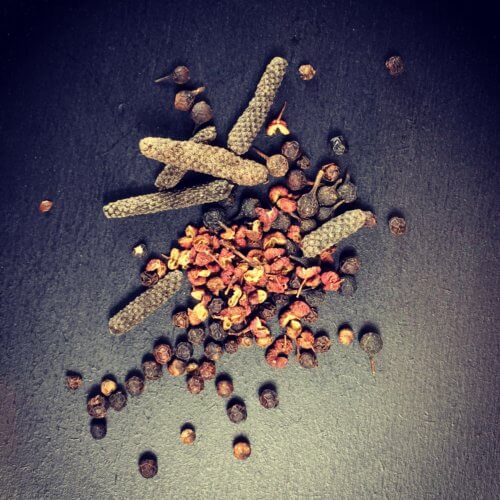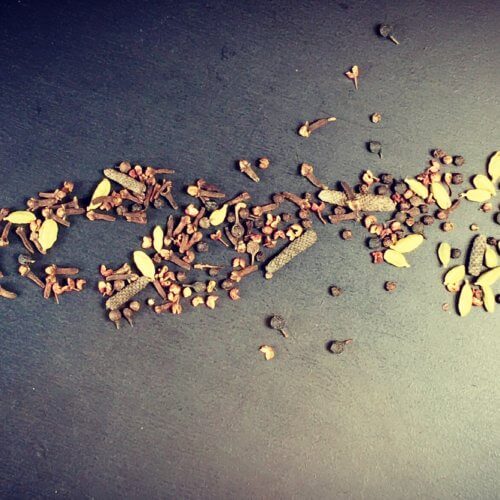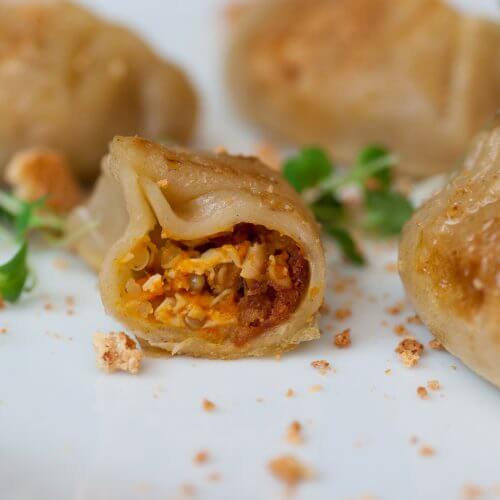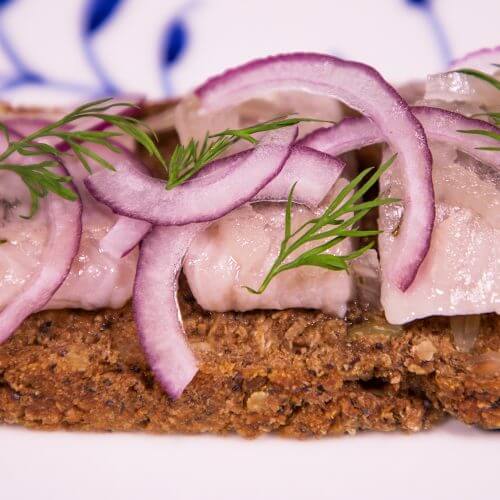Shortcrust pastry
Shortcrust is so versatile – combining brilliantly with sweet desserts, lighter dishes and powerful savoury flavours. It’s also a good one to start with because it’s relatively straightforward, at least compared with some other pastry techniques.
You will need:
125g plain flour
Pinch of salt
55g unsalted butter
2-3 tablespoon of cold water (30-45g)
Take the butter straight from the fridge, put it between two sheets of baking paper and pummel it flat with a rolling pin
Cut the butter into cubes
Then get it into the bowl with the flour, add a pinch of salt and start rubbing it in
Make sure you rub in the whole mixture, not just the top layer
Keep going until it resembles breadcrumbs
If you see any large bits of butter, break them up with your fingertips and rub in, but stop if you see yellow lumps of dough beginning to form
Add about two thirds of your water, distributing it evenly, either using a spoon or pouring very carefully, then start bringing it together with the spoon
Scrape off any wet mixture from the spoon as you go
Look out for any dry areas, making sure the moisture is evenly distributed
Once it starts to form a cohesive mass, bring it together
Press into a flat shape and wrap it in baking paper, then leave in the fridge for at least half an hour
It needs to feel firm before you start working with it again.
To roll the pastry:
Don’t worry if there are cracks appearing in the pastry.
Roll out between two sheets of baking paper
Start by ‘ridging’ the pastry – localised rolling, not all the way across
If deep or large cracks appear at the edges, leave it for 5-10 minutes, letting the temperature rise slightly
Start rolling it out, turning the pastry as you go
Keep in mind the basic shape you’re after as you turn it
Keep this up until it’s no thicker than a pound coin – about 3 millimetres
Cut out a section that will easily fit your tin
Then ease it into the shape with your fingers, but avoid stretching it
Roll off the excess
Gently push the edges in, not hard, but just so the top of the pastry, trimmed by the rolling pin, begins to peep up over the edges of the tin
You’ll also want to make sure the pastry goes right into the corners of the tin, but without pushing too hard with your finger
A good trick here is to use a little chunk of the discarded pastry to push it – that way any excess pressure will be absorbed
If there are any small cracks, just ‘plug them’ with a little piece if discarded pastry
Use a fork to prick the base
To blind bake:
Use some crumpled baking paper to line it, then fill with baking beans, ceramic beans, chickpeas or in this case, dried peas
Pat the beans down, making sure the sides are supported all the way up
Chilling them back down before baking, so the pastry is as firm as possible
Preheat the oven to 190C
Bake for 15 minutes, until the sides are cooked through
This is easy to check – just run your finger around the edge (carefully – it’ll be very hot!). It should have a dry, sandy texture, plus a distinctive pale golden colour
Now they need another 5-10 minutes without the beans, to finish the base
Again, check that the base has the same sandy feel as the sides
Let them cool, and they’ll be ready for filling
To make the savoury custard:
Combine two yolks, one whole egg and a large pinch of salt, whip together with a fork, then add 250g milk and 250g double cream
Troubleshooting:
Tough pastry – too much liquid or the pastry was overworked
Shrinkage – pastry wasn’t chilled sufficiently, too watery, the oven temperature was too low, the pastry was over-stretched when lining



